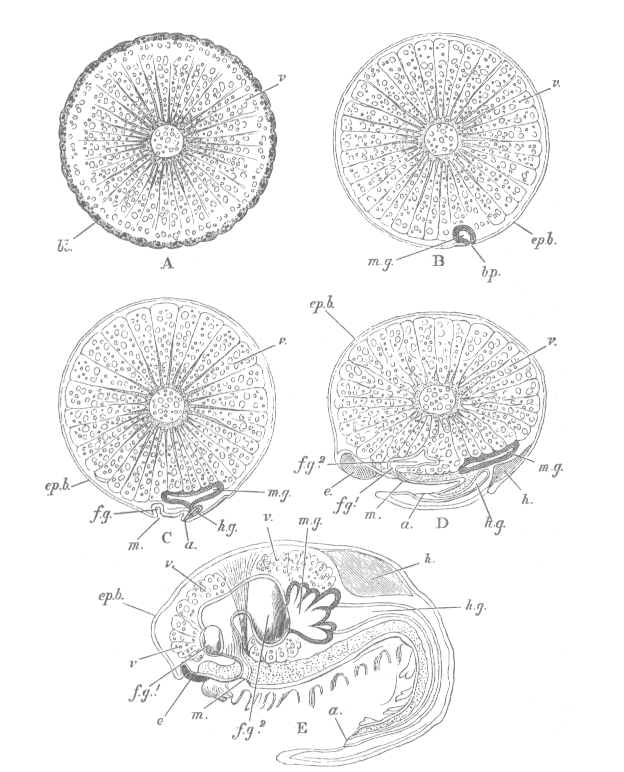
FIG. 57.--Astacus fluviatilis.--Diagrammatic sections of embryos; partly after Reichenbach, partly original ( x 20). A. An ovum in which the blastoderm is just formed. B. An ovum in which the invagination of the blastoderm to constitute the hypoblast or rudiment of the mid-gut has taken place. (This nearly answers to the stage represented in fig. 58, A.) C. A longitudinal section of an ovum, in which the rudiments of the abdomen, of the hind-gut, and of the fore-gut have appeared. (This nearly answers to the stage represented in fig. 58, E.) D. A similar section of an embryo in nearly the same stage of development as that represented in C, fig. 59. E. An embryo just hatched, in longitudinal section; a, anus; bl. blastoderm; bp, blastopore; e, eye; ep.b., epiblast; fg, fore-gut; fg1, its oesophageal, and fg2, its gastric portion; h, heart; hg, hind-gut; m, mouth; mg, hypoblast, archenteron, or mid-gut; v, yelk. The dotted portions in D and E represent the nervous system.
[Editor's note: illustration is reproduced here approximately twice the size of the woodcut in the book.]
Next> | ^Top